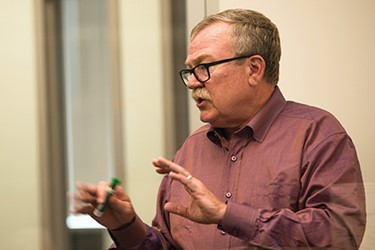Michael Bonney On How Biogen And Cubist Differ From Kaleido Biosciences

By Rob Wright, Chief Editor, Life Science Leader
Follow Me On Twitter @RfwrightLSL

Prior to becoming the CEO of Kaleido Biosciences, Michael Bonney served as the CEO of Cubist Pharmaceuticals, a company acquired by Merck in 2015 for $9.5 billion. Previous to that, he worked in a variety of senior roles at Biogen. During an interview toward developing an article for the upcoming May feature to appear in Life Science Leader magazine, I asked Bonney for his perspective on the difference between his previous employers, often valued in the billions, and his current role running a small relatively new company. We decided to share his thoughts on the topic via our increasingly popular, online, exclusive section — Beyond The Printed Page. And while we hope you enjoy this latest installment, which remains free to access, to read the entire feature requires a subscription. We hope you will consider investing in yourself by becoming a Life Science Leader subscriber today. Thanks for reading.
What Are Some Of The Differences Between Your Previous Employers And Kaleido Biosciences?
In the cases of Cubist and Biogen, both were situations where the lead asset was in Phase 3. As these companies were a little further along than where we presently are with Kaleido Biosciences, there existed a bit more structure in the organizations than what we presently have. Structure within an organization tends to create a greater sense of comfort and less a sense of ambiguity for employees. This is certainly an issue for any new startup (i.e., how to progress and develop a formalized process in light of ambiguity). When I arrived at Kaleido I expected this to be an issue, and as such, made it a priority to screen employees toward determining their comfort level in working in a rather ambiguous environment. I am certainly glad we did. A critical success factor in building a company is how employees respond in light of ambiguity.
Another difference I recall was joining Cubist on the day we had a failed Phase 3 study. Not only did this failure involve our lead asset, it was really our only asset. We had a few very early-stage technologies that might have been applied to the asset. But as it turned out, none of them were. That being said, we were still able to create new products and a portfolio for the company that eventually ended up driving a successful acquisition. But that failed study, which then resulted in the company going upside down from a valuation standpoint, made the recruiting of the initial leadership team at Cubist much more challenging than we presently have here at Kaleido. Here, we have an enormous opportunity, working in a very exciting new area of science that pretty much everybody has heard about in some way, shape, or form.
When I joined Biogen in 1995, the company was already publically traded on the NASDAQ, had royalty income that offset the cost base of the business and its first product was under regulatory review. It also was a bit of a darling in what were still the relatively early stages of the biotech revolution, providing for an easier time in recruiting talented folks. I’d say my current experience at Kaleido feels more like what I experienced at Biogen than Cubist. It was during the second generation of Cubist leadership (well past the Phase 3 failure) when I had a lot of really strong candidates for virtually every role to pick from, a luxury I didn’t have when I first arrived.
